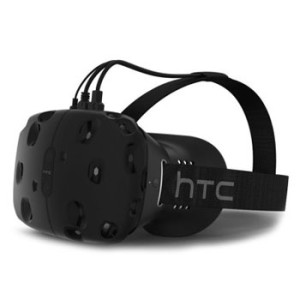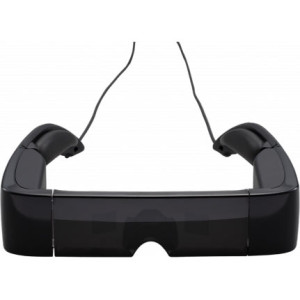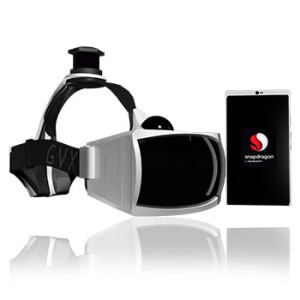VR Headsets with Displays
These are standalone VR Headsets you can use right out of the box:
| VR Glasses | Details | Resolution | Framerate (fps) | Field of View | Weight (gram) | Price |
|---|---|---|---|---|---|---|
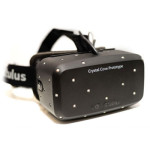 Oculus Rift
Oculus Rift
|
Features: Early Bird of the new generation of VR Headsets Display Technology:State of the art display Sound:3D Sound Adjustment:3 Lenses, adjustable Display Compatibility:Windows, Mac, Linux / HDMI, DVI Release Date:Q1 2016 |
|
|
|
| |
 Sony PlayStation VR / Sony Morpheus
Sony PlayStation VR / Sony Morpheus
|
Features: Social Screening planned Display Technology:LCD Sound:3D Sound Compatibility:HDMI + USB Release Date:Q1 2016 |
|
|
| ||
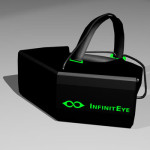 InfinitEye
InfinitEye
|
Features: Huge display but yet a leight-weight Release Date:n/A |
|
|
| ||
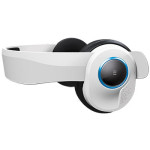 Avegant Glyph
Avegant Glyph
|
Features: Projection directly on the retina Display Technology:Virtual Retinal Display Sound:Premium Stereo Adjustment:-8 bis +2 dioptre Compatibility:HDMI, MHL, Klinkenkabel Release Date:released on the US market |
|
|
|
| |
 Sulon GVX
Sulon GVX
|
Features: Uses the real environment for games Display Technology:Touchscreen with Parallax-Technology for 3D contents Compatibility:Standalone, runs on Android Release Date:n/A |
|
| |||
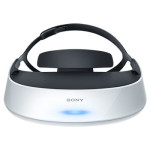 Sony HMZ-T2
Sony HMZ-T2
|
Features: Clear Mode Display Technology:Two OLED Sound:Surround Sound Adjustment:none Compatibility:HDMI |
|
|
|
| |
|
|
Features: 10% transparent glasses Display Technology:LcoS Sound:24 bit stereo Audio Adjustment:von 60mm bis 70mm IPD Adjustment Compatibility:HDMI, PS3, iPhone, Droid X, iPad, Blu-Ray Player |
|
|
|
| |
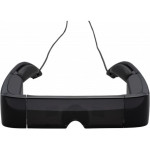 Epson Moverio – BT-100
Epson Moverio – BT-100
|
Features: Semi-transparent Glasses Display Technology:LCD Sound:Surround Sound Compatibility:USB |
|
|
| ||
 Sony HMZ-T3W
Sony HMZ-T3W
|
Display Technology: Two OLED Sound:7.1 Surround Sound Adjustment:none Compatibility:Wireless, HDMI |
|
|
|
|
VR Head Mounts for Smartphones
These are VR Headsets you combine with a compatible Smartphone of your choice. Some of them are meant to be used with specific models while others are widely compatible with many modern Smartphones.
| VR Glasses | Details | Field of View | Weight (gram) | Price |
|---|---|---|---|---|
 Samsung Gear VR
Samsung Gear VR
|
Features: only in combination with the Samsung Galaxy Note 4 Compatibility:microUSB 1.1 connection to the GALAXY Note 4 Adjustment:Adjustable Release Date:released |
|
| |
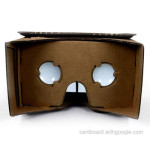 Google Cardboard VR
Google Cardboard VR
|
Features: Cheap VR Headset to craft yourself Adjustment:not adjustable Release Date:released |
|
| |
 Zeiss VR One
Zeiss VR One
|
Features: You can leave your glasses on while wearing this headset Compatibility:Smartphones with a display size between 4,7 and 5,2 Inches Adjustment:Adjustment not possible Release Date:released |
|
| |
 Durovis Dive
Durovis Dive
|
Features: Head Mount for Smartphones Compatibility:none Adjustment:not adjustable Release Date:released |
|
|
VR Headsets
The Virtual Reality is a dream that has driven many scientists in the past 20-30 years. In the early 1990s first Virtual Reality Headsets were released, but the technology was not able to excite the masses back then. This has changed now: New VR Headsets are developed by several big companies, including some very successfull start-ups already bought by huge investors like facebook.
Enjoy a great new Virtual Reality with a VR Headset
Technology allows us to dive into a whole new virtual world with many exciting adventures to enjoy. Whether you like to take part in a game and see everything from the heros point of view, or you want to visit distant places and feel like you were really standing on that cliff watching the great nature that surrounds you, or if you want to enjoy virtual sex within a VR Porn set – you are free to choose between these and many more options.
Virtual Reality productions are at full speed. Not only are there many VR Headsets in progress, there will also be huge amounts of content in the near future, while there are many already. You don’t need a lot of money to enjoy Virtual Reality: A modern Smartphone and a budget Headset to mount your Smartphone in is enough to open the door to a new digital world.
Virtual Reality And The Rise Of Headsets
The virtual reality revolution has been in full swing for the past half-decade, and it is only gaining more momentum as more and more companies – especially those studios and industries that can see the potential of a integration a 3D and immersive world into their product – have begun to focus their attention, money, and research into competing designs. And unlike the sci-fi perception of what virtual reality might have been, the most current incarnations are sleek, comfortable, and at the cornerstone of technological innovation.
Their applications have also opened up a huge potential, ranging from medical practices and the ability to remote control anything from cars to drones, to redefining what gaming means with a much more immersive first person construct, to even pornography and what intimacy really means in a 21st century context. Of course, the technology is still in its infancy, and there are a number of issues that need to be overcome in order to make the technology as completely accessible and feasible as it’s being advertised – and this has a lot more to do with how we view virtual reality as an actual concept, and then how to apply this concept to available technology.
The Best Headset On The Market
For the longest time, the virtual reality market was dominated by a handful of VR headsets. This included the Oculus Rift which was – for all intents and purposes – the first mass-market all-in-one headset that was completely self-contained and inclusive. It was also one of the few headsets that required access to a PC to run, and while the demands of the Oculus itself were high, so to were its demands on a supplementing hardware system.
It recommends a NVIDIA GTX 970 or higher processor with at least 8 gigabytes of RAM to run smoothly, and this immediately tells you something about the sort of software you could also expect. It was not meant for an idle consumer – it was geared specifically toward someone with an interest in virtual reality tech, and who was willing (and able) to accommodate the costs involved. At the same time, other companies also saw the value of using pre-existing technology to recreate a virtual reality experience, and Samsung was among the first to make strides with their Gear VR.
Designed to use their Galaxy S6 or higher, it too was able to mimic VR videos and games in a 360 degree field of vision, and although its quality couldn’t compete with the Oculus, it was a perfect blend between quality and cost. Additionally, a number of companies also saw that they could use other Smartphones in the same vein (leading to an influx of Smartphone related headsets like the Google Cardboard – the ‘poor man’s VR).
The Cost Of Doing Business Versus User Friendliness
It isn’t just the fact that virtual reality is a rather new industry and still trying to find solid ground – trying to render a whole world and experience in 3D versus its 2D cousin has also prompted some foreseen (and unforeseen) obstacles, most obviously the fact that production is a lot more expensive in terms of both hardware and software. And this has reflected in the price offered to consumers, as well. Whether it’s a virtual reality video or a virtual reality game, there is a noticeably higher price tag attached, and this is something that could be significantly troubling to a number of producers of headsets.
While Smartphone headsets are generally exempt, the drive to create more self-contained prototypes like the Oculus Rift has ultimately created a niche market where only those with cash can afford to play. The Oculus Rift itself retails for about $849, which doesn’t even take into account the sort of upgrading you would have to do on your PC. Additionally, the newest headsets set to be released like the HTC Vive come in at a whopping $1,149.
Finding A Balance Between Mass Market Consumerism
Essentially, there is nothing that can stop virtual reality from becoming an ubiquitous aspect of our lives, maybe even on the scale of the Internet one day. That said, making VR accessible to everyday people is by far the most pertinent issue facing both headset developers and VR content producers alike – which is why it’s nice to see that one company in particular is trying to just that. Sony, which is famous for its Playstation legacy, also has a VR headset slated to be released in 2016.
Aptly titled Project Morpheus (now PS VR) , the headset is a sleek and futuristic looking system that manages to stand out in three distinct ways: first, and foremost, it’s hoping to offer a quality immersion on par with even the top-tier headsets like the Oculus Rift and Vive (in terms of framerate – 120 Hertz – and graphics, but also extremely low latency). And of course Porn companies already jumped on the train and offer PS VR Porn Movies for the upcoming Playstation VR Headset. Conversely, though, it’s going to be priced in the median range at around $549. But lastly, it’s going to be compatible with a Playstation 4, taking a cue from Samsung by capitalizing on pre-existing devices that don’t require users to go out and spend a fortune on additional devices.
The Future Outlook On Virtual Reality Headsets
We can expect a lot from companies like Samsung and HTC in the future, especially as they continue to work the bugs out of their systems. But ultimately it is the producers of software and content that will determine where the market goes – already there are a huge number of virtual reality games slated for use on these headsets, and there is an unrivalled sort of experience to be offered (the versatility of VR means we can look forward to multiplayer games, increased peripherals – like Leap Motion – and a more thoroughly enjoyable form of entertainment across mediums).
As virtual reality becomes more and more popular, we can also expect the relative price of headsets to drop as well over time, but it is probably companies that have already shown respect for their patrons that will accrue the biggest following. Sony, in particular, is likely to attract a huge following simply because they’ve managed to find that perfect balance between cost and quality, while still offering an integration of their other products.


